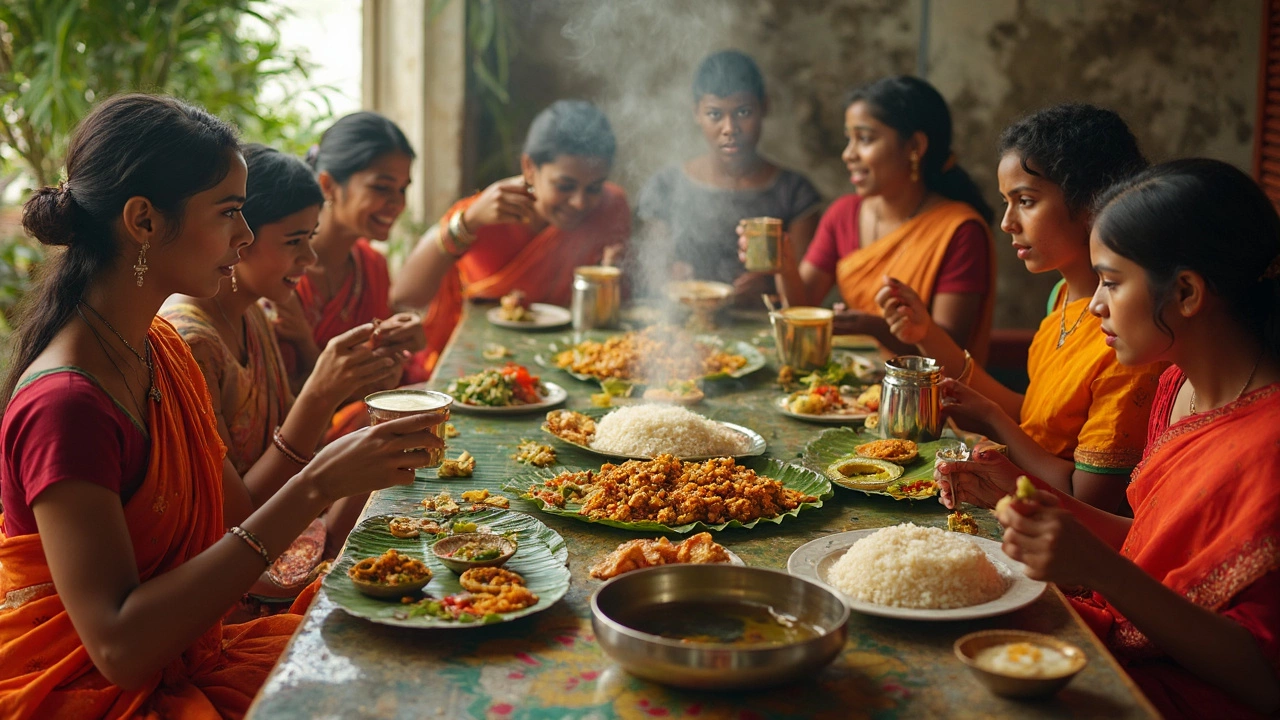SEARCH
Thali: India’s All‑In‑One Meal Explained
Ever sat down to a plate that feels like a whole restaurant? That’s a thali. It’s a single round dish piled with rice, bread, veggies, lentils, meat or fish, pickles, and a sweet treat. The idea is simple – give you a balanced, tasty bite of everything the region is known for, without having to order a dozen separate plates.
Why is a thali so popular? First, it’s convenient. You get carbs, protein, and veggies in one go, which is perfect for busy travelers. Second, it’s a cultural snapshot. Each state puts its own spin on the lineup, so a thali from Gujarat looks very different from one in Tamil Nadu. And finally, it’s budget‑friendly. Most thalis cost less than a typical restaurant combo, making it a smart choice for anyone watching their wallet.
What’s on a Typical Thali?
A classic thali starts with a base of rice or a flatbread like roti or naan. Around that you’ll find a bowl of dal (lentils), a vegetable curry, a meat or fish preparation if you’re not vegetarian, and a small serving of a sweet such as gulab jamun or payasam. Add a side of pickle (achar), a dollop of yogurt (raita), and a crisp papad for texture, and you’ve got the full package.
Regional variations add their own flair. In the north, you might see butter chicken, paneer tikka, and a thick, creamy dal. Down south, the thali swaps butter for coconut, serving dishes like sambar, avial, and a tamarind‑based rasam. In the west, you’ll often get sweet and sour flavors, with kadhi and bhindi. The south‑east favors mustard seeds and chili, while the east loves fish curries and mustard greens.
The size of each component is kept small on purpose – you’re meant to sample, not stuff yourself. This encourages you to try a bit of everything and discover new flavors without feeling overwhelmed.
Where to Find the Best Thalis in India
If you’re traveling, look for places that specialize in regional cuisine rather than generic tourist spots. In Delhi, head to Karim’s or local dhabas for a hearty North Indian thali. In Chennai, a visit to Murugan Idli Shop can surprise you with a South Indian thali that includes crisp dosas and tangy rasam.
For a true taste of Gujarat, try the Gujarati thali at Gordhan Thal in Ahmedabad – it’s famous for its sweet‑savory balance. In Kolkata, the Bengali thali at 6 Ballygunge Place offers fish, mishti, and a sweet potato bhaja that captures the city’s love for fish and sweets.
Don’t overlook smaller towns. A thali at a village roadside stall often beats a restaurant version because it’s made with local, fresh ingredients and recipes passed down generations. Ask locals where they eat – they’ll point you to hidden gems that don’t appear on any travel blog.
When you order, don’t be shy about asking the server to explain each dish. Most places are happy to describe what you’re getting, and it adds a personal touch to the meal. If you’re vegetarian, just mention it; most kitchens can adjust the meat component without compromising flavor.
Enjoying a thali is more than eating; it’s a mini cultural tour on a plate. By trying different regional thalis, you’ll get a feel for India’s culinary diversity, learn how spices are balanced, and discover your own favorite flavor combos. So the next time you’re in India, skip the single‑item menu and dive straight into a thali – your taste buds will thank you.

Typical South Indian Lunch: What to Expect on Your Plate
Curious about what locals eat for lunch in South India? This article breaks down a classic South Indian lunch plate, including the essential dishes, eating habits, and small tips that make the meal truly local. Find out what flavors and textures to expect, and learn why this midday meal looks nothing like you’ll find in the north. Grab tips for ordering at restaurants and picking up on mealtime rituals. Perfect for travelers or foodies who want to experience the real taste of the south.
Continue reading